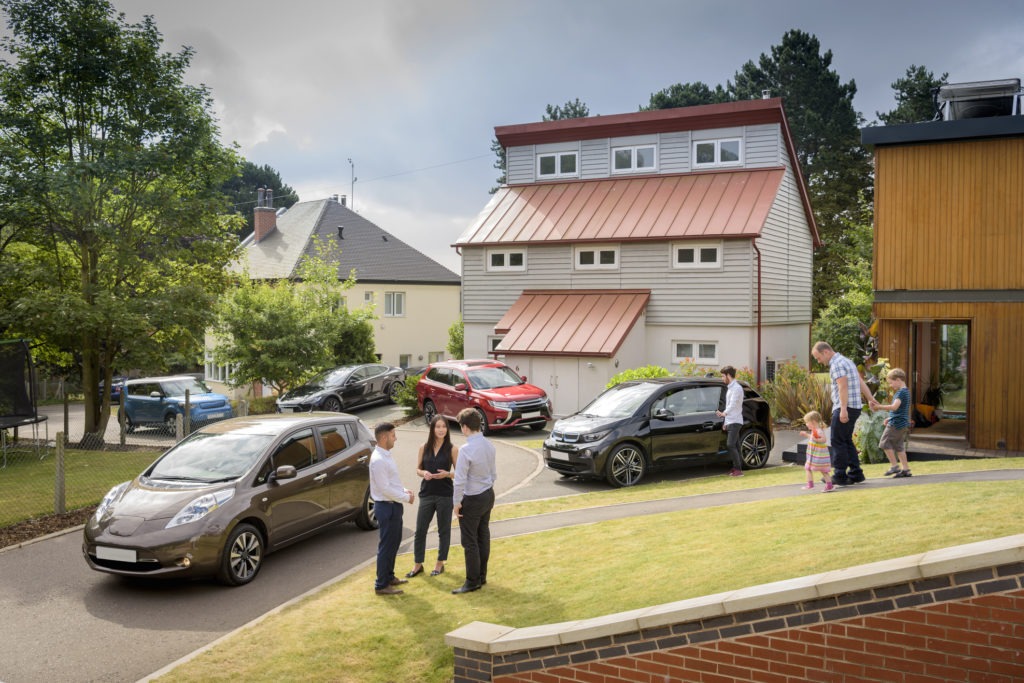EVs risk serious damage to UK power network if just a handful charge on one street, report warns
21 April 2017

21 April 2017
The UK electricity network will be unable to cope with the rising demand of electric vehicles (EVs) in just three years unless serious improvements are made to local UK networks, a think tank has warned. A revolution in smart chargers is essential to begin immediately, with UK government ministers calling on electric car owners to avoid charging at times of peak energy demand. The Green Alliance report warns that even if only six electric vehicle owners on the same street charged their cars at the same time, this could lead to electric equipment-damaging brownouts, where the local network suffers a drop in voltage due to excessive load.
According to the report, the vast amount of power to perform even one EV charge is equivalent to the amount an entire house uses in three full days, so even a single charge of an electric vehicle sits as a major event load on the local network.
Analysis from Scottish and Southern Electricity Networks, which covers local grids in Scotland and Southern England, found that most EV owners charge their cars immediately after returning home from work. That coincides with when energy demand is already at its highest point in the day. Green Alliance is calling on the UK government to make it compulsory to use ′smart’ charging points, which can defer maximum charging at times of peak load and stop charging once the battery is full. This technology is currently being trialled by another network operator, Western Power Distribution, which covers the UK’s south west, as the first stages of the Electric Nation project, a collaboration with UK government regulator Ofgem.
Currently, few of the more than 12,000 electric chargers in the UK are ′smart’. While there are around 11,000 public charging points, many owners install and charge their electric cars at home.Report author Dustin Benton told The Guardian: ′The government should say all chargers from now on must be smart. Once they’re in, it’s very expensive to retrofit them.’
Smart chargers could delay the start of the night-time EV charging by a few hours, relieving the peak pressure on the local network.
Green Alliance also made other recommendations, including a proposal for a new independent electricity network, separate from the current main network, operated by National Grid, to cope with demand. However, it seems unlikely that the UK running two separate electricity systems would be desirable, and that it would be better to concentrate investment on improving the National Grid network. Smart chargers are likely to be crucial in the medium term, ahead of long term heavy investment in infrastructure improvements, as electric vehicles take off in earnest. National Grid said it would be ready for the EV revolution, and had coped successfully with energy use evolutions for decades.
Furthermore, the report highlights that rapidly falling costs of solar panels mean that by 2020 they are expected to be commercially positive for businesses to install rather than taking energy from the grid. Household batteries introduced to charge EVs, such as Tesla’s Powerwall, could help solve the issue with solar power generation peaking during the day, and EV charging peaking at night. A National Grid spokesperson said: ′Electric vehicles can be used to help feed energy back into the system at [peak] times,’ through the use of these household EV battery storage systems. Such energy storage systems at the level of the UK’s national grid network are not technically achievable, and before the impetus of EV charging have been costly at the local level.
In addition to local infrastructure issues, the UK also has a long-term issue at the national level to cope with the expected huge upsurge in electric vehicles. Decades of under-investment in power plants, with dirty coal plants being closed and too much of a focus on renewables, has meant the UK’s spare electricity margin fell to only 1% last winter.
Sales of electric cars in the UK increased by 56% in 2016 year on year, and much more rapid expansion is expected in just a few years, when both electric vehicles and solar panels become competitive at mainstream price points, even without government subsidies.